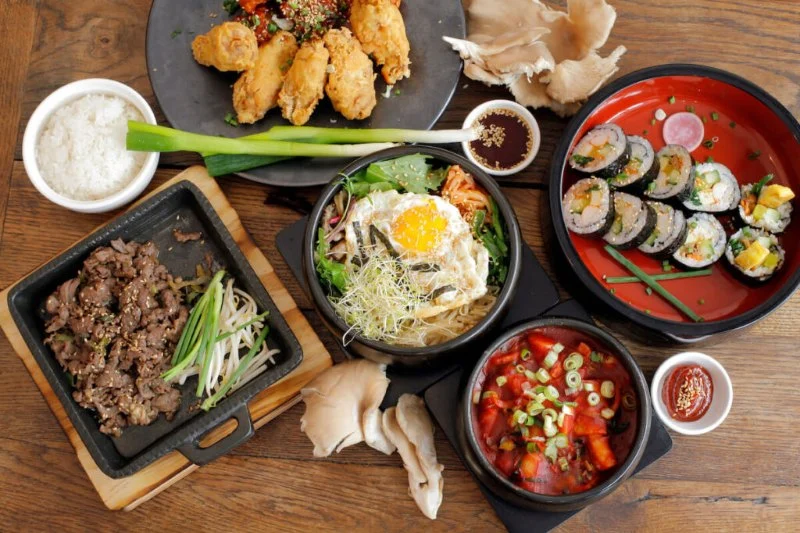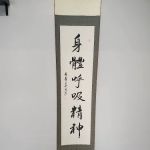
- 1. Why Choose a Traditional Korean Meal for Your Tae Kwon Do Belt Test?
- 2. Key Korean Dishes to Prepare for the Celebration
- 3. Step-by-Step Guide to Making Korean Dishes for the Belt Test Celebration
- 4. Other Tips for a Successful Tae Kwon Do Belt Test Celebration
1. Why Choose a Traditional Korean Meal for Your Tae Kwon Do Belt Test?
Celebrating a Tae Kwon Do belt test is a milestone in any martial artist’s journey, and the celebration should reflect the discipline and tradition of the art. A traditional Korean meal offers a deep connection to the culture that originated Tae Kwon Do and provides a meaningful way to celebrate achievements. It’s not just about the food—it’s about honoring the customs and the spirit of martial arts.
By choosing a traditional Korean meal, you're also embracing the values of sharing, respect, and community, which are integral to the philosophy of Tae Kwon Do. This meal isn’t just fuel for the body; it’s also a way to honor the hard work, dedication, and perseverance that go into mastering martial arts.

United Martial Arts Centers Warwick / umac warwick ny
43 West St, Warwick, NY 10990, USA
2. Key Korean Dishes to Prepare for the Celebration
A traditional Korean meal typically consists of a variety of dishes that showcase the balance of flavors, textures, and nutritional value. Below are some essential dishes to include in your celebration:
- Kimchi: A quintessential part of Korean cuisine, kimchi is a fermented vegetable dish, usually made with cabbage and radish, and seasoned with chili, garlic, ginger, and fish sauce. It’s rich in probiotics and adds a spicy, tangy flavor to your meal.
- Bulgogi (Grilled Beef): Bulgogi is marinated beef grilled to perfection, offering a sweet and savory flavor profile. It’s a crowd-pleaser and a great way to celebrate the occasion.
- Japchae (Stir-Fried Glass Noodles): A flavorful stir-fry made with sweet potato noodles, vegetables, and a touch of sesame oil, Japchae is a traditional Korean side dish that complements any meal.
- Galbitang (Beef Short Rib Soup): This hearty and comforting soup made with beef short ribs, radish, and a clear broth is perfect for warming up your guests, especially if the celebration is held during the cooler months.
- Gimbap (Korean Sushi Rolls): Gimbap, often referred to as the Korean version of sushi, is made with rice, vegetables, and meat wrapped in seaweed. It’s an easy-to-eat dish that adds variety to your spread.
- Kimchi Jjigae (Kimchi Stew): A comforting stew made with aged kimchi, tofu, and pork, Kimchi Jjigae is a delicious and warming dish that represents the heartiness of Korean home-cooked meals.
3. Step-by-Step Guide to Making Korean Dishes for the Belt Test Celebration
Now that you know which dishes to prepare, here’s a simple guide to get you started:

American Martial Arts Center, AMAC / amac taekwondo
CentrevilleFairfax CountyVirginia
6206 Multiplex Dr, Centreville, VA 20121, USA
1. Prepare the Bulgogi Marinade
For the bulgogi, mix soy sauce, sugar, sesame oil, minced garlic, grated ginger, and a touch of pepper. Marinate the thinly sliced beef in the mixture for about 30 minutes. Then, grill or stir-fry the beef until tender and slightly caramelized. Serve with a side of rice.
2. Make Kimchi and Kimchi Jjigae
If you're making your own kimchi, you’ll need napa cabbage, Korean chili flakes (gochugaru), garlic, ginger, fish sauce, and salt. Allow the kimchi to ferment for a few days before serving. For the Kimchi Jjigae, simmer the kimchi with pork (or tofu for a vegetarian option) in a pot with garlic, gochujang (Korean chili paste), and some water to create a spicy, flavorful stew.
3. Cook the Japchae
Cook the sweet potato noodles (dangmyeon) according to package instructions. Stir-fry with vegetables like spinach, carrots, and onions, then season with soy sauce, sesame oil, and a touch of sugar. Add the noodles to the stir-fry and mix everything together.
4. Prepare Gimbap
For gimbap, spread a thin layer of rice on a seaweed sheet, add vegetables like cucumber, carrot, and spinach, and a protein like beef, egg, or fish. Roll the ingredients tightly and slice into bite-sized pieces.
4. Other Tips for a Successful Tae Kwon Do Belt Test Celebration
While food plays a significant role in any celebration, here are a few additional tips to make your event truly special:
- Involve Your Tae Kwon Do Family: Invite fellow students, instructors, and their families to the celebration. This helps build community and allows everyone to share in the excitement of the achievement.
- Share the Significance of the Meal: Before serving the food, take a moment to explain the cultural significance of each dish. This not only enhances the meal but also deepens everyone’s connection to the celebration.
- Create a Fun, Energetic Atmosphere: Since Tae Kwon Do is all about energy and focus, create a vibrant atmosphere by playing traditional Korean music or even having a mini Tae Kwon Do demonstration for everyone to enjoy!
With these steps, you’ll be able to prepare a memorable and meaningful celebration for your Tae Kwon Do belt test. Remember, the most important part of the celebration is not just the food, but the sense of accomplishment and community it represents. Visit Jeuns TKD Hub for more great products and services to enhance your Tae Kwon Do experience!







 USA Karate4.0 (51 reviews)
USA Karate4.0 (51 reviews) Kinney Karate4.0 (5 reviews)
Kinney Karate4.0 (5 reviews) Fitness Innovations & Tae Kwon5.0 (5 reviews)
Fitness Innovations & Tae Kwon5.0 (5 reviews) Champions Martial Arts Roseland4.0 (21 reviews)
Champions Martial Arts Roseland4.0 (21 reviews) Martin Martial Arts4.0 (15 reviews)
Martin Martial Arts4.0 (15 reviews) Koseki Budokai5.0 (5 reviews)
Koseki Budokai5.0 (5 reviews) How to Execute a Jumping Roundhouse Kick to the Head
How to Execute a Jumping Roundhouse Kick to the Head How to Execute a Double Kick Combination in Sparring
How to Execute a Double Kick Combination in Sparring How to Perform a Flawless Axe Kick: A Step-by-Step Guide
How to Perform a Flawless Axe Kick: A Step-by-Step Guide DIY Tae Kwon Do Training Equipment for Home Practice
DIY Tae Kwon Do Training Equipment for Home Practice How to Increase Your Vertical Jump for Tae Kwon Do Flying Kicks
How to Increase Your Vertical Jump for Tae Kwon Do Flying Kicks The History of the Tae Kwon Do Peace Corps
The History of the Tae Kwon Do Peace Corps